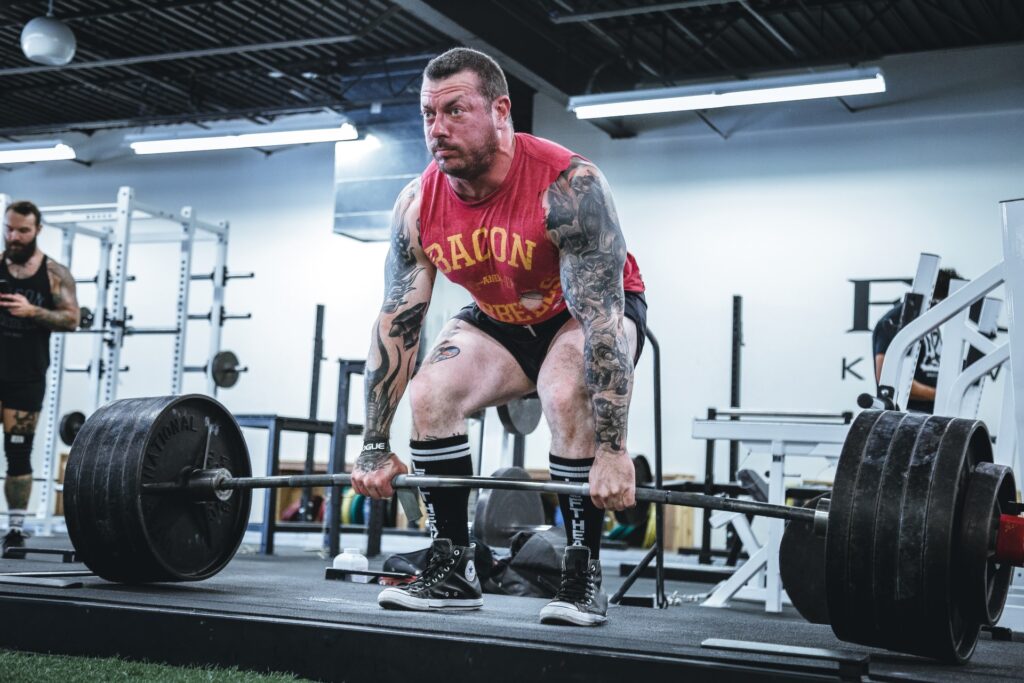Powerlifting is a sport that requires a combination of strength, technique, and mental fortitude. One of the most important aspects of powerlifting is being able to lift heavy weights for a single repetition, also known as a “single rep”. While powerlifters typically train with sets of multiple repetitions to build strength and technique, single reps are the ultimate test of a lifter’s abilities. In this article, we’ll explore the importance of single reps in powerlifting, as well as provide tips on how to train for and execute them successfully. Whether you’re a seasoned powerlifter or just starting out, mastering the single rep is crucial for reaching your full potential in the sport.
Table of Contents
Single reps for strength gains
Singles are one of the most effective training methods yet extremely underrated. Most of the coaches are afraid of singles and claim that it leads to quick burnout and extreme CNS fatigue. Due to the myths built around them, singles often have a bad reputation and people are afraid to train with singles even just before the competition as they are convinced it might negatively influence their performance.
But is it actually justified?
Singles are extremely efficient in building maximal strength due to their high specificity. Performing singles prepares you for singles, thus allowing you to get more neurological gains before the competition. As powerlifters, strengthlifters (strength discipline consisting of the squat, strict press and conventional deadlift) and weightlifters compete with singles, it is only natural that training with singles would allow them to get the most out of their routines.
Why are single repetitions important in powerlifting?
As a powerlifter, I can tell you that single repetitions are essential for building true strength and achieving success in the sport. Here are just a few reasons why:
- Maximal recruitment of muscle fibers: When you lift a heavy weight for a single rep, you recruit a maximum number of muscle fibers to generate force. This helps to build raw strength and power that can translate into bigger lifts in the long run.
- Improving technique and form: By focusing on executing a perfect single repetition, you can improve your technique and form. This translates into more efficient and effective lifting, which can help you achieve bigger lifts and avoid injury.
- Building mental toughness: Lifting heavy weights for a single rep requires a tremendous amount of mental toughness and focus. By training for and executing single reps, you can build the mental fortitude needed to succeed on the platform and push yourself to new heights.
In short, single repetitions are important in powerlifting because they help build raw strength, improve technique and form, and build mental toughness. So, don’t overlook the importance of singles in your training – they could be the key to unlocking your full potential in the sport.
Single reps characteristics
Let’s first outline the characteristics of a maximal effort single lift:
- Maximal force production
- Short time under tension
- Predominantly utilising ATP-PC system
- Require extreme focus
As you train with submaximal weights for more repetitions, even doubles or triples, the lifts resemble less and less of what are you actually after. You need to make sure that apart from performing the same or similar lift, you also need to perform it in a similar manner that is for a similar number of repetitions and apply a similar amount of force. Even doubles and triples require you to repeatedly perform the work 2 or 3 more times more than during a single repetition therefore they are not as specific as you might have previously thought so.
Training with singles does not necessarily have to strain your CNS that much if done correctly. Applying maximal force does not equal lifting maximal weight as you are capable of achieving it through CAT (Compensatory Acceleration Training) or CTT (Compensatory Tension Training).
Single rep training methods
Let’s now have a look at a couple of training methods that allow you to incorporate singles into your routine in a smart way:
Use around 80% of your top set and focus on acceleration during the concentric phase. It allows you for maximal force production for a short time, thus resembling a quick burst of power. Aim for multiple sets and bear in mind that due to the CNS activation, the last set should feel lighter than the first sets so don’t push it too much. Train only as long as you are able to maintain maximal speed.
Maximally contract your agonists, antagonists, synergists and stabilising muscles simultaneously. This way, you will express maximal force without moving at a high speed. This training method will enable you to lift submaximal weight as if it was your 1 repetition maximum lift. It will teach you how to drive and build up torque within your muscles. I recommend no less than 70% for the start.
- Cluster Sets
Incorporate short rest periods in between the repetitions within a set. This will enable you to train in incomplete recovery conditions and make every repetition a single by allowing elastic-like energy stored within the kinematic chain to dissipate after each rep. It’s effective for building up the volume.
- Single Sets
Count how many repetitions can you do with a certain percentage of your 1rm. Split that amount of repetitions into single sets with longer rest periods, thus allowing you for complete recovery. This way, you will perform the same amount of reps with the same weight while allowing yourself to maintain better technique. The gains will also be more specific to the maximum effort singles performed in the competition. My recommendation is 85% of your 1rm minimum.
Get strong with singles
In conclusion, the single rep is a cornerstone of powerlifting and a true test of a lifter’s strength and technique. While it’s important to incorporate sets of multiple repetitions in your training to build strength and muscle, training for single reps is crucial for reaching your full potential in the sport.
Presented training methods will allow you to make some use of single repetitions and program your training in a way that does not strain your CNS that much, thus allowing you to carry on for longer without deloading. Bear in mind, that there are many combinations that can be successfully implemented so don’t be afraid to experiment.
To master the single rep, it’s important to focus on building strength and technique through a combination of heavy lifting, accessory exercises, and mental preparation. By gradually increasing the weight and intensity of your training, you can improve your ability to lift heavy weights for a single rep and build the mental fortitude needed to succeed on the platform.
So, whether you’re a seasoned powerlifter or just starting out, don’t overlook the importance of the single rep in your training. With hard work, dedication, and a focus on building strength and technique, you can get strong with singles and achieve your goals in the sport of powerlifting.




